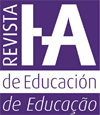The null curriculum and its different modalities
DOI:
https://doi.org/10.35362/rie2513143Keywords:
Null curriculum; applicability; pertinent curriculum; relevant curriculumAbstract
This article presents some aspects of the null curriculum, in a broader dimension than that expressed by Eisner (1994), since it refers not only to unfulfilled curricular programming, but also encompasses fulfilled programming, but due to its lack of applicability it is placed in the category of non-relevant curriculum (Arrieta and Meza: 2000). Seventeen different forms of null curriculum are highlighted, namely: null curriculum by omission, by inapplicability, by lushness, by chronological reduction, by teacher preferences, by inadequate evaluation, by lack of incentives, by lack of teacher preparation, by knowledge gap, by excess of audiovisual resources, by methodological failures, by gap between student preparation and new program contents, by superficiality, by lack of professional experience of the original career, by novelty, by tradition and by lack of coordination. Some characteristics of each of the varieties of null curriculum are offered and the problems they cause in the educational field are analyzed from the pedagogical, organizational and managerial point of view.
Translated with www.DeepL.com/Translator (free version)
Downloads
References
How to Cite
Downloads
Published
Issue
Section
License
Any authors who publish with this journal accept the following terms:















